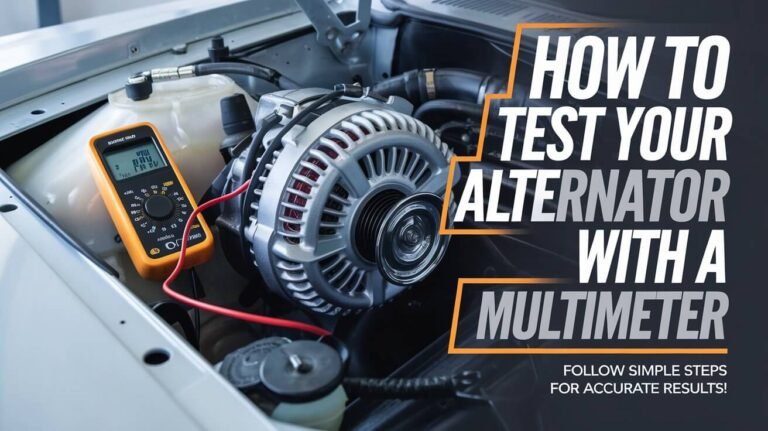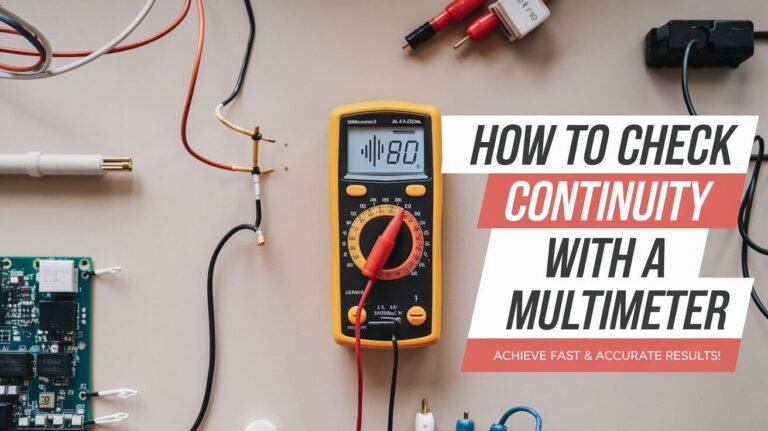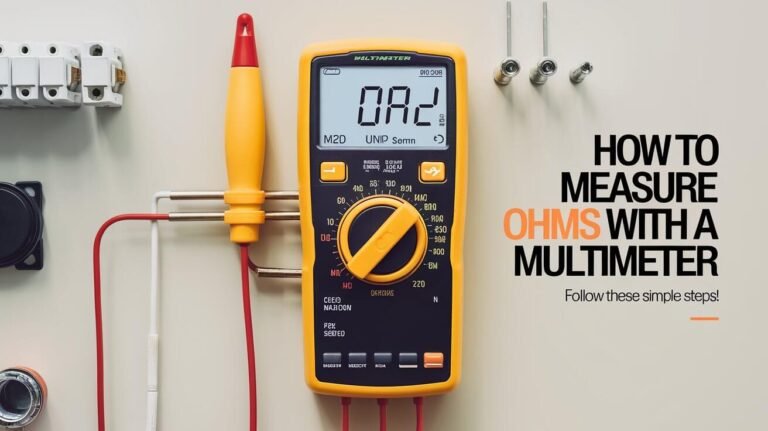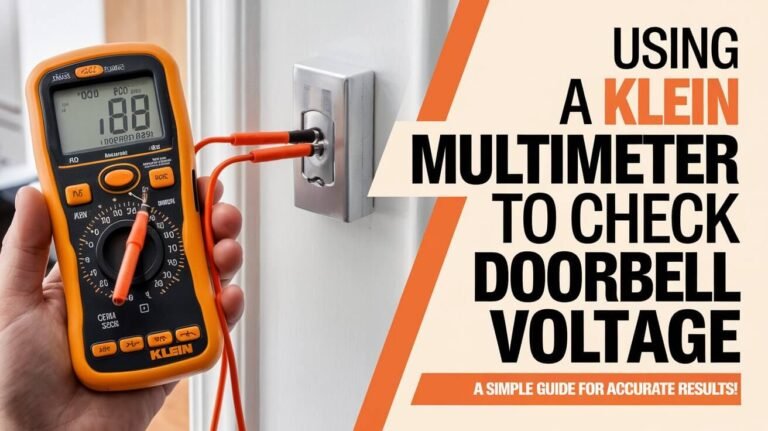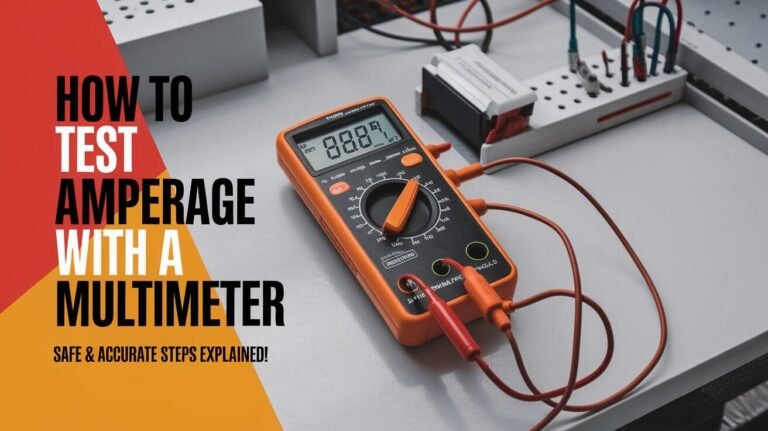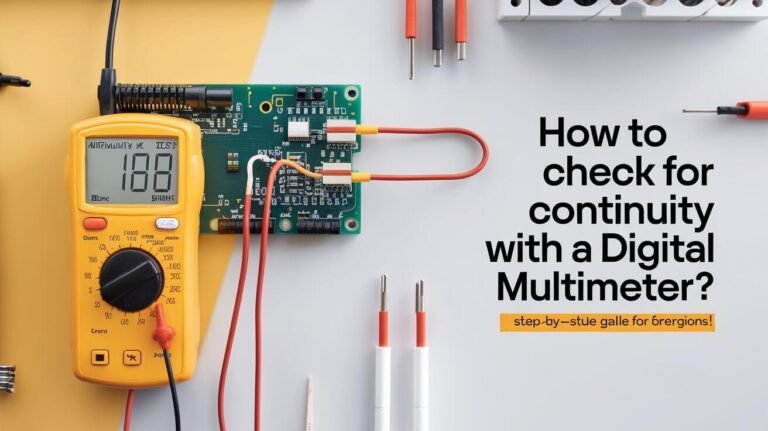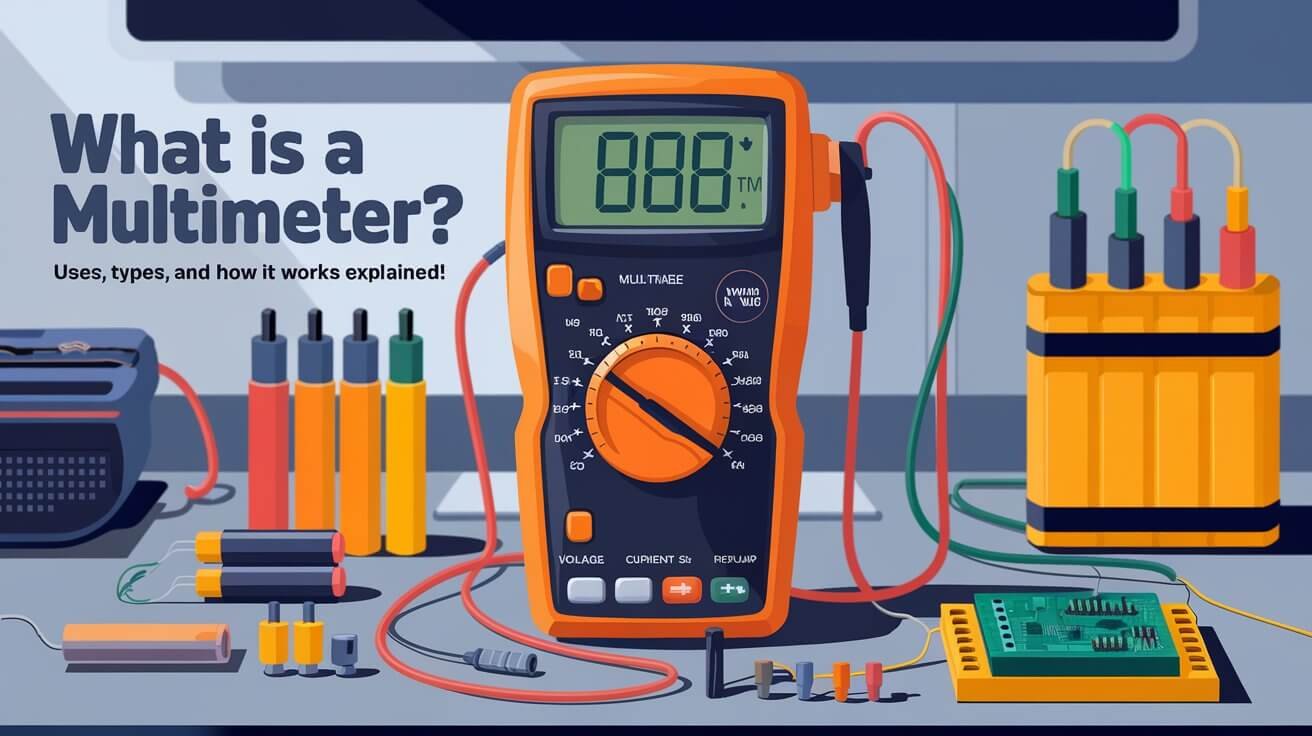
A multimeter is a handy electronic tool used to check different electrical values. It can measure voltage, current, and resistance. Unlike old analog meters, digital multimeters (DMMs) are more accurate and reliable. They show readings on a digital screen, making it simple to understand the results.
Multimeters vary in features and cost. You can find them for under $10 or spend over $5,000 for top models. They are crucial for checking electrical properties in many areas, like fixing electronic circuits or doing car diagnostics.
Definition and Basic Components
A digital multimeter is a handy tool for measuring electrical values like voltage, current, and resistance. It has several important parts that work together. This ensures we get accurate and reliable readings.
Main Parts of a Multimeter
The main parts of a typical multimeter include:
- A digital display to show the measured values
- Buttons and controls to select different measurement functions and ranges
- A dial or switch to choose the type of measurement (voltage, current, resistance, etc.)
- Jacks or terminals to connect the test leads
Display and Interface Elements
The digital display on a multimeter shows the measured values clearly. It often includes extra details like the measurement unit and battery life. The interface has buttons and switches for navigating the multimeter’s functions.
Test Leads and Probes
The test leads are flexible, insulated wires that connect the multimeter to the circuit. They are color-coded, with red for positive and black for negative. The probe tips at the ends are key for making accurate measurements by securely contacting the circuit.
What Is A Multimeter
A multimeter is a handy tool that can check many things. It can measure voltage, resistance, and current. Some models even check temperature and capacitance. It’s a must-have for anyone working with electronics or doing electrical repairs.
The term “multimeter” first appeared in 1907. The first digital multimeter came out in 1955 by Non Linear Systems. These tools have a long history, starting with pocket-watch-style meters in the early 1900s.
Over time, multimeters have gotten better. The 1970s saw the first handheld digital models. Now, they can do things like auto-ranging and measure decibels. Today, they’re key for many jobs, from industrial work to car repairs.
| Feature | Description |
|---|---|
| Voltage Measurement | Multimeters can measure both AC (Alternating Current) and DC (Direct Current) voltage, allowing users to test power sources, circuits, and electronic components. |
| Current Measurement | Multimeters can measure the flow of electric current, which is essential for troubleshooting and diagnosing electrical issues. |
| Resistance Measurement | Multimeters can measure the resistance of electrical components, which is crucial for verifying the integrity of circuits and identifying potential issues. |
| Additional Capabilities | Advanced multimeters may include features like temperature measurement, capacitance testing, frequency measurement, and more, expanding their versatility and usefulness. |
Multimeters are crucial for anyone dealing with electrical and electronic systems. They help ensure everything works right. Whether you’re a DIY fan or a pro, a multimeter is a valuable tool.
Digital vs. Analog Multimeters: Key Differences
Digital and analog multimeters are both used for electrical measurements. Each has its own strengths. Knowing the differences helps you choose the right tool for your needs.
Measurement Accuracy Comparison
Digital multimeters are known for their high accuracy. They give precise numbers for current, resistance, and voltage. Analog multimeters, while useful, can be less accurate due to human error and limitations in capturing small changes.
Display Types and Reading Methods
Digital multimeters show numbers on an LCD or LED screen. This makes reading easy. Analog multimeters use a needle on a scale. This method can lead to errors and is harder to read.
Impedance Handling Capabilities
Input impedance is key when measuring electronic circuits. Digital multimeters have a high input impedance. This ensures accurate measurements and protects sensitive parts. Analog multimeters may have lower input impedance, affecting accuracy, mainly in high-impedance circuits.
| Feature | Digital Multimeter | Analog Multimeter |
|---|---|---|
| Measurement Accuracy | Higher accuracy, with precise numerical readings | Lower accuracy, prone to interpretation errors |
| Display and Reading | Clear digital display, easy to read | Analog scale and moving needle, requires interpretation |
| Impedance Handling | High input impedance, prevents damage to circuits | Variable input impedance, may impact measurement accuracy |
| Measurement Capabilities | Wide range of measurements, including advanced features | Typically limited to basic electrical measurements |
| Cost | Generally more expensive | Generally more affordable |
Choosing between digital and analog multimeters depends on your needs and budget. Digital multimeters are best for precision and advanced features. Analog multimeters are simpler, more durable, and cost-effective for basic measurements.
Core Functions and Measurement Capabilities
Multimeters are versatile tools that can measure many electrical values. They can check voltage (AC and DC), current (AC and DC), and resistance. They also have a feature for continuity testing, which beeps when there’s a low-resistance path between two points.
Some advanced multimeters can do more. They can measure capacitance, frequency, temperature, and even test transistors. These extra features make multimeters very useful for many electrical and electronic tasks.
| Measurement Capability | Importance |
|---|---|
| Voltage Measurement | Essential for evaluating the electrical potential or “pressure” in a circuit, ensuring proper voltage levels and diagnosing issues. |
| Current Measurement | Crucial for determining the flow of electrical charge, which is vital for troubleshooting and analyzing the performance of electronic components and circuits. |
| Resistance Measurement | Allows for the assessment of the opposition to the flow of electric current, enabling the identification of faulty components and the verification of circuit continuity. |
| Continuity Testing | Provides a quick and easy way to check for the presence of a low-resistance path between two points, helping to identify breaks or shorts in wiring and connections. |
With their basic and advanced features, multimeters are key tools for both professionals and DIY fans. They help diagnose and fix electrical and electronic systems accurately and efficiently.
Safety Features and Protection Mechanisms
Using a multimeter safely is very important. Multimeters have many features to protect users and the device from harm. These include voltage protection, current limiting, and grounding techniques.
Voltage Protection Systems
Multimeters have systems to protect against high voltages. These systems use fuses or other parts to prevent damage. They keep the multimeter safe from voltages it can’t handle.
This is key because high voltages can damage the multimeter and even hurt the user.
Current Limiting Features
Multimeters also have features to limit current. These features stop too much current from flowing, even in short circuits. This keeps the device safe and protects the user from harm.
Excessive current can cause serious injury or even death.
Proper Grounding Techniques
Grounding is vital for safe and accurate multimeter use. Connecting the ground lead to a stable ground reduces shock risk. It also keeps readings accurate by avoiding interference.
Always follow the manufacturer’s grounding instructions for safe use.
Multimeters are built with safety in mind. It’s important to read the manual and follow safety rules. This ensures safe use and accurate measurements.
Types of Multimeter Categories
There are many types of multimeters, each for different needs and uses. From simple to advanced, the right multimeter depends on the task.
General-purpose multimeters are affordable and easy to use. They’re great for simple electrical checks. They measure voltage, current, and resistance.
- They have a simple and easy-to-use interface.
- They’re perfect for basic electrical checks in homes and small businesses.
- They’re a budget-friendly choice for DIY and maintenance tasks.
Standard multimeters have more features, like measuring frequency and capacitance. They’re used by professionals in electrical and electronics work.
- They can measure a wider range of things.
- They’re good for complex troubleshooting and repairs.
- They offer higher accuracy and precision for important tasks.
Advanced multimeters have features like data logging and wireless connectivity. They’re loved by electrical engineers and technicians for their advanced diagnostic tools.
| Multimeter Type | Key Features | Typical Applications |
|---|---|---|
| General-Purpose | Affordable, easy to use, basic functionality | Residential, light commercial, DIY projects |
| Standard | Advanced features, greater accuracy, specialized measurements | Professional electrical and electronics work |
| Advanced | Data logging, wireless connectivity, temperature measurement | Electrical engineering, advanced diagnostics, analytical work |
The right multimeter depends on your needs and the task. Whether it’s basic, standard, or advanced, each type meets specific needs.
Essential Measuring Techniques
As skilled technicians, we know how important it is to measure right. Whether you’re checking voltage, testing current, or measuring resistance, the right steps are key. Let’s explore the essential techniques you need to master.
Voltage Measurement Steps
- Set your multimeter to the right voltage range, whether AC or DC.
- Connect the multimeter’s positive (red) and negative (black) probes in parallel with the circuit you’re testing.
- Make sure the multimeter is connected to the circuit without breaking it.
- Look at the multimeter’s display and note the voltage level.
Current Testing Procedures
- Switch the multimeter to the current measurement mode, choosing the right range.
- Break the circuit and connect the multimeter in series with it.
- Check that the multimeter is connected right, with the positive (red) probe upstream and the negative (black) probe downstream.
- Write down the current reading on the multimeter’s display.
Resistance Checking Methods
Measuring resistance with a multimeter needs a few steps:
- Turn off the circuit or component you’re testing.
- Set the multimeter to the resistance mode and pick the right range.
- Connect the multimeter’s positive (red) and negative (black) probes across the component or circuit you want to measure.
- Read the resistance value shown on the multimeter.
Always start with the highest range and go down to avoid damage. With practice and focus, you’ll get better at voltage, current, and resistance measurements.
Advanced Measurement Features
Modern digital multimeters have evolved with advanced features. They go beyond basic voltage, current, and resistance testing. These features help us solve complex electrical and electronic problems with ease.
Measuring capacitance is a key feature. It’s essential for checking capacitors in electronic circuits. Digital multimeters can accurately find faulty or out-of-spec components.
Frequency measurement is another important feature. It lets us analyze signal frequencies in various systems. This is great for checking oscillators, filters, and other frequency-sensitive parts.
Temperature measurement is also a valuable feature. It allows us to check the temperature of components or systems. This helps us find thermal issues and ensure everything is working right.
High-end digital multimeters can log data. This means we can capture and analyze measurements over time. It’s great for troubleshooting, monitoring, and long-term studies.
Some advanced multimeters can measure complex AC waveforms accurately. They have True RMS capabilities. This gives us precise readings, even with harmonics or distortion, helping with power quality analysis and equipment checks.
These advanced features, along with digital multimeters’ accuracy and reliability, make them essential for professionals. They help us face complex challenges with confidence and precision.
Professional Applications and Uses
Multimeters are key tools in many professional fields. They help with electrical and electronic troubleshooting. These tools are used in industries, car repairs, and electronics fixing. They ensure things work well, find problems, and keep everyone safe.
Industrial Applications
In factories, multimeters check and keep complex machines running. They help workers find and fix problems. They also test sensors and electrical systems. This helps avoid big issues and keeps machines working well.
Electronics Repair
For those fixing electronics, multimeters are a must. They find problems in parts, check if circuits are working, and measure important values. This helps fix things fast and get devices working right again.
Automotive Diagnostics
In car repair, multimeters are crucial for electrical checks. Mechanics use them to check batteries, sensors, and find electrical issues. This helps fix problems and makes cars safer and better.
Multimeters are also used in many other areas. This includes HVAC, renewable energy, and electrical work in homes and businesses. Their ability to accurately diagnose and fix issues makes them essential for many professionals.
Maintenance and Care Tips
Keeping your multimeter in good shape is key to its long life and precise readings. Regular care helps your multimeter work better and longer. Here are some important tips to keep your multimeter in top condition.
Cleaning and Storage
It’s important to keep your multimeter clean. Use a soft, dry cloth to wipe it down and remove dirt. Don’t use water or harsh chemicals, as they can harm the inside parts. Store your multimeter in a dry, cool spot, away from extreme temperatures, moisture, and magnetic fields.
Test Lead Care
- Check your test leads often for wear, damage, or fraying. Replace them if needed to ensure safe and accurate readings.
- Before using, make sure the test leads are securely attached to the multimeter and connections are clean.
- Using high-quality, gold-tipped test leads can improve electrical contact and response time.
Battery Replacement
Watch your multimeter’s battery closely. Replace them when the low battery light comes on for accurate readings. Remove the batteries if you’re storing the multimeter for a long time to prevent corrosion.
Calibration and Accuracy
Calibration is crucial, more so for professional-grade multimeters, to keep them accurate. Follow the manufacturer’s advice on when to calibrate and use a certified reference standard for the best results.
Following care and maintenance tips helps your multimeter last longer, stay accurate, and provide reliable measurements for years.
Choosing the Right Multimeter for Your Needs
Choosing the right multimeter is key for accurate and efficient measurements. When picking a multimeter, think about your measurement requirements and budget considerations. For simple home tasks, a basic multimeter is enough. It should have features like diode testing and a backlit display, costing between $40 and $80.
For professionals or those needing advanced features, prices go up. High-end meters from brands like Fluke can cost hundreds of dollars. They offer top accuracy and safety. But, cheap multimeters, costing just $2 or $10, might not be as reliable.
When choosing a multimeter, focus on what you need. Look at the measurement ranges, accuracy, and input impedance. Also, consider safety ratings, battery life, and the brand’s reputation. This way, you can pick the best multimeter for your needs within your budget.

